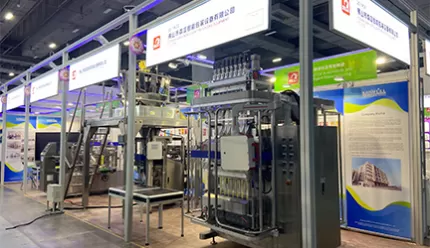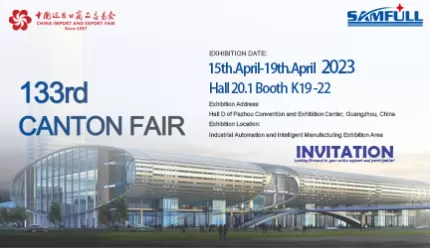News & Events
The purchase of a packaging machine is not just a transaction. Rather, it should represent a long-term commitment between you and the packaging machine manufacturer. You will have this packaging equipment for many years to come and should be confident that the OEM is committed to your success over the long haul. If you've done your due diligence when looking into packaging automation, you've likely contacted multiple packaging machine manufacturers. So how do you narrow down your choices? The answer lies in the details.
To evaluate possible packaging machine manufacturers, consider the following 5 questions.
1. How thorough is their discovery process?
Packaging equipment is not 'one-size-fits-all'. While there are standard machine types and models, packaging equipment must be tailored to your unique specifications and goals. Hence, a packaging machine manufacturer worth their salt should drive you a bit crazy initially WITH A bunch of QUESTIONS. This is done to make sure their recommendations and pricing most accurately match your unique needs.
If you end up with an improperly specified machine because the OEM was more interested in making a quick sale than properly scoping your project, you can end up losing money via change orders, machine failures, inefficiency, and lost production time.
2. What materials are used to construct their machines?
Packaging machines constructed with inferior materials will simply 'wear out' faster. This equals additional costs to you via maintenance, repairs, parts replacement, machine overhauls, and the additional downtime resulting from all of the above.
The best packaging machines feature stainless steel frames and contact parts. Stainless steel construction provides many advantages. It has a high strength-to-weight advantage, making it uniquely resistant to corrosion, chemicals, and high heat at a reduced thickness as compared to other materials.
Stainless steel packaging machines are suitable for nearly any industry and facility. Other construction materials such as iron or specialty alloys simply cannot match the corrosion resistance of stainless steel. Iron, for example, will rust in reaction to oxygen and water, making it more brittle over time.
Stainless steel's resilient properties allow it to endure almost any environment, from dusty shops to highly sensitive applications that demand frequent cleanings with harsh chemicals. This high-quality material makes it the best long-term investment for your facility.
3. How durable are key machine components?
It's what's on the inside of the packaging machine that counts. It bears repeating that inferior construction can lead to increased costs via constant parts replacement, unexpected downtime, and costly upgrades or rebuilds. Here are a few key components to pay extra close attention to:
Sealing jaws: This component uses heat, pressure, and time to seal packages shut. If the sealing jaws are of inferior construction, your packages will end up with inferior seals that lead to leaks and contamination. To prevent this, choose equipment with seal jaws that are forged from a single piece of material. This will ensure constant, even heat conduction and pressure.
Pull belts: Pull belts help transport the packaging film through the machine, and as such, they need to be constructed of strong, durable materials. Watch for plastic pieces; this can be a red flag for inferior construction that will lead to parts wearing quickly, which means extra cost for you as well as increased risk of unexpected failure.
4. How complex are the machines?
When it comes to packaging machinery, in most cases, less is more and simpler is better. Adding unnecessary complexity adds barriers to efficient production.
High-quality packaging machines are designed for ease-of-use, featuring an accessible open design concept and a modular configuration.
A digital control system, preferably with a touchscreen human-machine interface (HMI), should be able to store multiple product formulas. This makes it easier for operators to enter packaging configurations and parameters into the system all at once.
5. What is the changeover process?
Packaging machines should have the ability to change over to different bag styles or sizes seamlessly, without any tools required.
The resulting decrease in changeover time and subsequent cost savings help companies optimize productivity, production, and profitability for their business. It also facilitates a shorter learning curve for packaging line operators and maintenance employees.
All it should take to change over a premade pouch machine is the push of a button on the HMI, and loading the new bags into the machine. Changing over a VFFS machine should also be easily accomplished by changing out modular components like forming tubes, jaw assemblies, and the film roll.
Latest News
May. 05, 2023
HOT PRODUCTS
ABOUT US
Foshan Samfull Packaging Machinery Co., Ltd. is a high-tech enterprise engaged in the production, sales and research and development of intelligent packaging machines.
NAVIGATION
REQUEST A QUOTE


